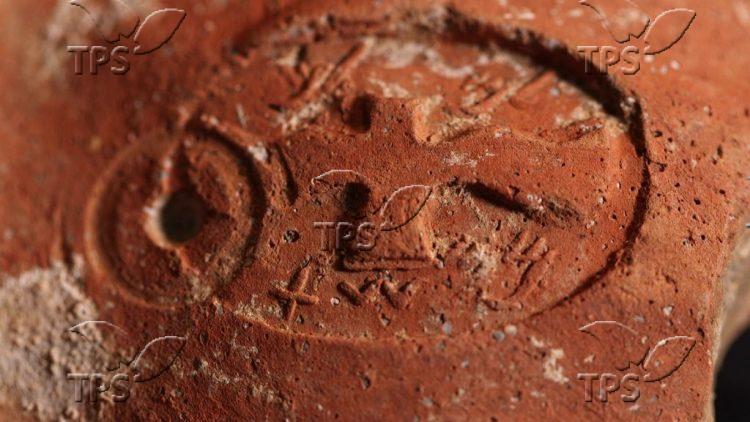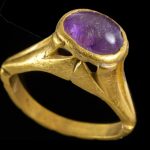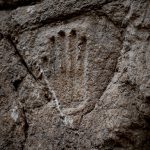Ancient Discovery Near Jerusalem Reveals Economic Impact of Sennacherib’s Invasion
Jerusalem, 9 October, 2024 (TPS-IL) -- For the first time, archaeological evidence has been uncovered near Jerusalem, shedding light on the economic impact of Sennacherib’s military campaign on the Kingdom of Judah, the Israel Antiquities Authority announced on Wednesday.
“It is very moving to encounter messages from high-ranking officials in the Judahite administration from some 2,700 years ago,” said Minister of Heritage Rabbi Amichai Eliyahu. “The fascinating discovery by the Israel Antiquities Authority tells the millennia-long story of the Jewish people, who—despite crises and very difficult periods—have always known how to rise again, rebuild, and thrive.”
The discoveries were made during Antiquities Authority excavations in southern Jerusalem prior to the construction of a new neighborhood.
The findings reveal a profound transformation in Judah’s administrative and economic systems following the Assyrian invasion of 701 BCE, a military campaign known from both biblical and Assyrian sources.
The biblical War of Sennacherib refers to the 701 BCE Assyrian campaign against the Kingdom of Judah, led by King Hezekiah, who rebelled against Assyrian dominance. Sennacherib’s forces besieged Jerusalem, but, according to the Bible, God miraculously intervened, saving the city.
This excavation marks the first time evidence of this event described in the Second Book of Kings has been uncovered so close to Jerusalem. Previously, traces of Sennacherib’s campaign were primarily found in the Judean Lowlands. The campaign, a response to King Hezekiah’s rebellion against Assyrian rule, devastated many Judean cities. Yet, while the physical destruction of cities in the lowlands is well documented, the recent discoveries near Jerusalem offer a glimpse into the administrative and economic upheaval the kingdom experienced in the wake of this assault.
At the Mordot Arnona site in southern Jerusalem, archaeologists uncovered the remains of two superimposed administrative buildings. The earlier structure, dating to the late 8th century BCE, functioned during the reign of King Hezekiah or possibly even his father, King Ahaz. According to excavation directors Neria Sapir, Natan Ben-Ari, and Benyamin Storchan, the building was destroyed and buried beneath a massive stone heap. The stone pile served as a foundation for a later administrative structure, erected in the early 7th century BCE after the Assyrian suppression of Hezekiah’s rebellion.
“We interpret these dramatic changes as a statement by the Assyrian imperial government, intended to convey a political-diplomatic message to the surrounding region,” the directors explained. “The overhaul of the administrative structure and its function showed who was truly in charge, while maintaining Judah’s role in the Assyrian empire’s economy.”
One of the most striking discoveries at the site was a collection of over 180 stamp-impressed jar handles, many of which were marked with the inscription “[belonging] to the king.”
These impressions indicate the jars were part of the administrative storage system used to collect and manage agricultural taxes. In ancient Judah, farmers were required to pay taxes in the form of agricultural produce, which was then transported and stored in large ceramic jars. It is likely that wine and possibly olive oil were produced and stored at the site.
Among the stamped handles, 17 bear “private” names written in Hebrew script, offering clues about the individuals who were part of Judah’s elite. Names like Menachem Yubna, Peqach Tavra, and Tzophen Azaryahu were among those identified, prompting questions about whether these individuals were landowners, senior Judean officials, or other prominent figures within the kingdom’s economic system.
The long chronology of the stamped jar handles provides insight into the continuity of Judah’s administrative activity, despite the changes brought about by the Assyrian conquest.
Researchers from Tel Aviv University, led by Professor Oded Lipschits, are working alongside the Antiquities Authority to study the seal assemblages in greater detail. The findings suggest that the “private” stamp impressions were part of a short-lived administrative system established by Hezekiah in preparation for his rebellion against Assyria. This system was dismantled in the wake of Sennacherib’s campaign, and the now-discovered stamp impressions reflect a return to Assyrian taxation.







